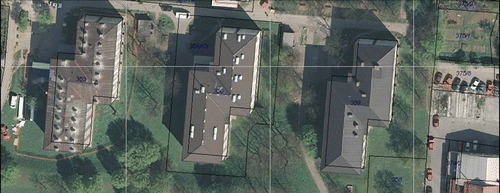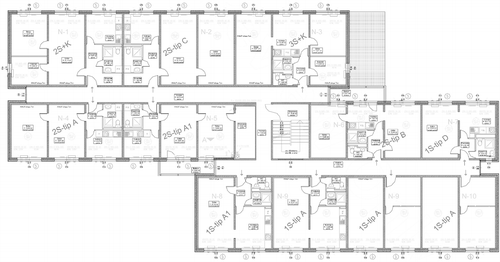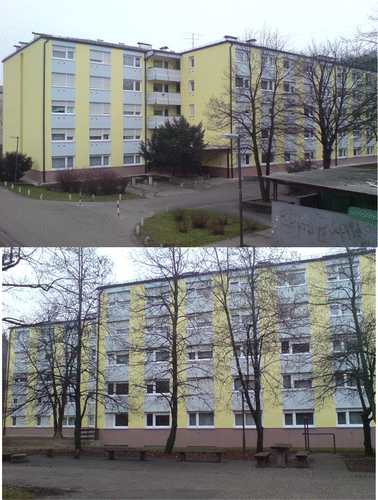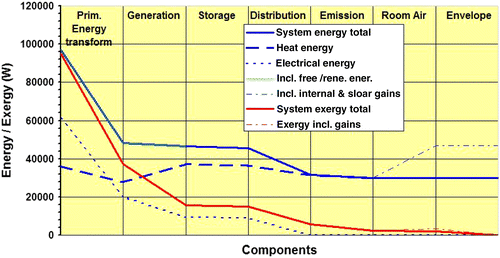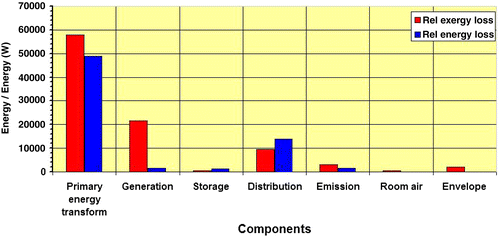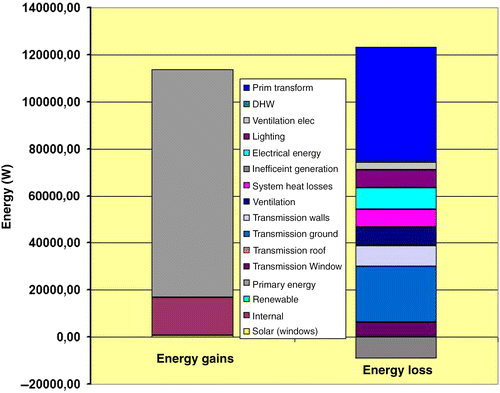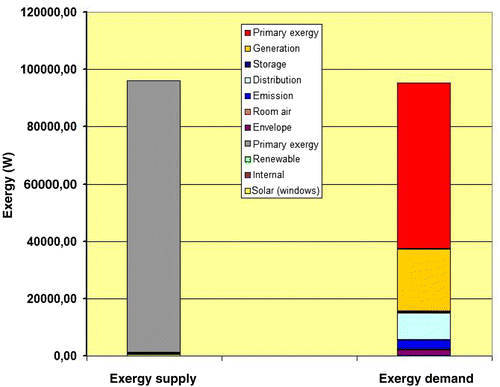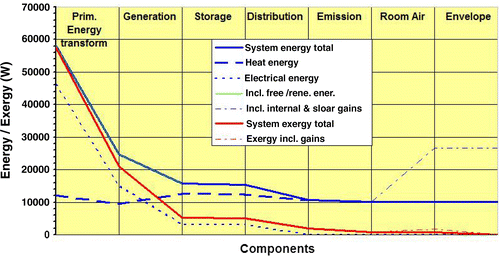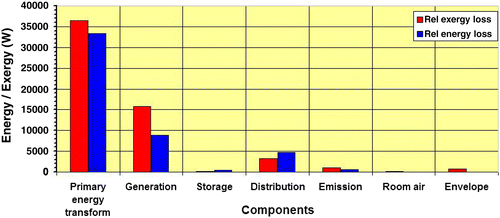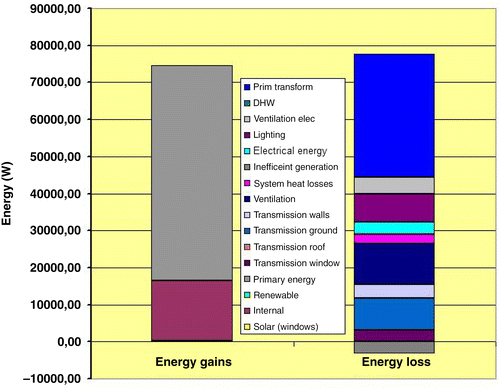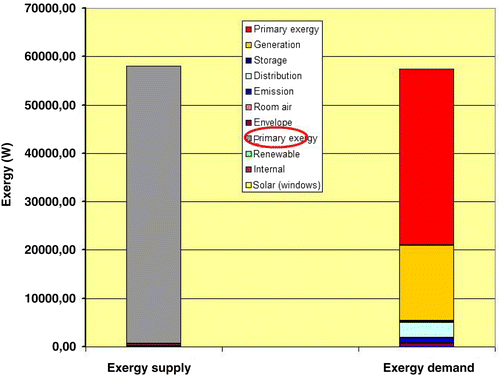Abstract
Buildings contribute almost half of the world's carbon dioxide (CO2) emissions. Energy and water consumption are some of the largest and fastest growing pressures on the global environment. The use of energy is mainly attributed to the heating and cooling of buildings. The type of materials used in the construction of buildings plays a significant role in the life-cycle emissions of each dwelling. Changing the material use in the construction of an existing building and adding insulation could have a major impact on energy use and the environment of the building in its entire life cycle. This paper investigates the amount of exergy savings and the decrease in CO2 emissions resulting from the refurbishing of an existing building in Ljubljana. This study results from the growing awareness that in the choice of building materials, the designer must consider not only the requirements of the owner and occupier of the building, but also the resulting energy savings, the resource base and the effects of the manufacturing and processing of building materials on the environment. The exergy efficiency of the material use is calculated and the environmental impact assessment of energy and material use is accounted for.
1. Introduction
Buildings constitute one of the biggest consumers of energy and top the scale of environmental polluters. The construction, use and demolition of buildings use large amounts of energy and produce emissions and waste that have negative impacts on the environment. After measuring and observing the energy consumed by a building, it is realised that the use phase (use and repairing) is the most onerous and corresponds to 91% of the total amounts of energy that a building uses during its entire lifespan (SUSCON Report Citation2005). These facts lead to the need of measuring the energy used and finding ways to minimise it. In order to achieve the minimum energy use, the tool of exergy analysis can be used.
Keçebaş (Citation2012) performed an exergoeconomic analysis of various fuels to optimise insulation thickness. He found that the optimum insulation thickness decreases with the increase in the inlet temperature of the fuel. Rezaei et al. (Citation2013) used exergy analysis to draw a conclusion that a high melting temperature of phase-change materials will provide a higher exergy efficiency in a heating system. Koroneos, Nanaki, and Xydis (Citation2011) applied exergy analysis to the energy use in Greece. They analysed energy and exergy utilisation in the energy sector of Greece and compared the exergy efficiencies of the residential, industrial and transport sectors. Koroneos and Tsarouhis (Citation2012) performed the exergy analysis and life-cycle assessment of the use of renewable energy sources in a building. The exergy analysis showed a relatively low efficiency for renewable energy systems with environmental impacts being very low. Sakulpipatsin et al. (Citation2010) presented an extended method for the exergy analysis of buildings and heating, ventilation and air conditioning systems, according to an energy demand build-up model from the building side to the energy supply side. In their study, the exergy analysis pinpoints that the thermal energy emission and the control and energy conversion systems are the main causes of exergy inefficiencies in the heating and cooling cases, respectively.
Exergy is based on the second law of thermodynamics and is defined as the maximal obtainable potential of work of a material or energy flow in relation to the environment. An exergy analysis determines where the work potential of natural resources in relation to the surrounding environment is lost, i.e. where the irreversibility takes place. The maximal obtainable potential of work of a material or energy flow can only be obtained completely via reversible processes. For sustainable development, the use of the exergy reservoirs of natural resources has to be minimised to a level where there is no irreversible damage to the environment and the supply of exergy to further generation is secured (http://www.exergie.nl/lifecycle.html).
Exergy analysis has been utilised in the optimisation of thermal processes in power plants and in the industry. However, energy systems in buildings are designed based solely on the energy conservation principle. This principle alone does not provide a full understanding of important aspects of energy use in buildings, e.g. matching the quality levels of energy supply and end-use, fully expressing the advantages of using passive (e.g. thermal insulation and window design) and ambient energy (e.g. heat pumps) in buildings. From this viewpoint, exergy analysis is an important link in understanding and designing energy flows in buildings.
2. Description of the dwelling
The Public Housing Fund (PHF) of the Municipality of Ljubljana (Housing Fund; http://www.rebecee.de/index.html) is currently being maintaining about 3200 dwellings that are located in 1225 buildings. The analysis was carried out for one of the buildings situated in Steletova 8, as shown in Figure . A plan view of the ground floor of the building is presented in Figure and the data on the heating volume of the building are shown in Table .
Table 1 Steletova 8 building data.
Due to the high cost for energy consumed, which could lead to economic problems for the PHF, it is important to implement new methods in order to make these dwellings more economical to the inhabitants and the PHF. This action is in line with the EU and Slovenian policy on sustainable development.
The implementation of certain changes could have a significant impact on the economic and environmental performance of the buildings. In this case, material change (insulation and window frames) was implemented, which is shown in Figure . This led to a better energetic behaviour of the buildings. The savings achieved in energy use are given in Table . These energy savings are very significant, reaching a level of 50%.
Table 2 Existing and refurbished construction materials
Facade, envelope
Facade: +10 cm on existing 5 cm styrofoam, sum: 15 cm.
Roof: from 10 to 25 cm Tiles (TI).
New windows with overall U = 1.1 W/m2K.
Ventilation
Ventilation with 75–85% heat recovery.
Based on the energy analysis of the building, it was found that the energy use of old constructions exceeded the standards. That is, the energy used was 76.4 kWh/m2, with the limit being 56.0 kWh/m2. The addition of new materials lowered the energy used by 5.5 kWh/m2, a reduction of 93%.
3. Exergy analysis
For the exergy analysis, the ‘LOWEX NL’ Excel program was used (Sakulpipatsin and Boelman Citation2006). This is a research project output financed within the EOS LT (‘Energie Onderzoek Subsidie – Langer Termijn’) program of Senternovem. The project is carried out by the 3TU Federation: Delft University of Technology, University of Twente and Eindhoven University of Technology (http://www.lowex.tudelft.nl/index.html). The project is part of the Dutch contribution to the IEA Annex 49 ‘Low Energy Systems for High Performance Buildings and Communities’. The project also participates in the European research C24 (COSTeXergy).
The exergy of the system under consideration can be expressed by the following equations (Koroneos and Rovas Citation2012):
The standard chemical exergy of gaseous reference species can therefore be expressed as (Szargut, Morris, and Steward Citation1988):
3.1. Energy and exergy flows
Looking at the energy use from the perspective of building services, energy is supplied to active heating systems in a building, flows from the primary energy source (e.g. a fuel) via the building services to the building envelope and is ultimately dissipated in the outdoor environment. The spreadsheet-based tool is built in different blocks of sub-systems, each of which represents an important step in the energy flow. The tool estimates the energy demand of a building operating at steady-state design conditions, based on the German National Standard (DIN 4701-10), the German Energy Conservation Regulation (EnEV) and the European Standard EN ISO 13790 (Report assessed on 2012 at iristor.vuc.ac.be ftp://iristor.vub.ac.be/patio/ARCH/pub/fdescamp/bruface/standards/13790_ISO_FDIS_E_2007-11.pdf).
The input data include general information on building shell construction and building services specifications. Calculations take into consideration heat losses in the different components as well as the auxiliary electricity required for pumps and fans. The electricity demands for artificial lighting and for driving fans in the ventilation system are also taken into consideration. On the primary energy side, the inputs are differentiated between fossil and renewable sources. On the building envelope side, average values for passive solar energy gains are estimated from standard solar radiation data, window size and glass type. Average heat losses through the building envelope are estimated based on standard design temperatures and overall heat transfer coefficients.
From a building designer's viewpoint, a building may be regarded as a shell allowing its occupants to interact with (or shelter from) the outdoor environment. Natural resources (e.g. sunshine, wind) may supply passive heat and cold (energy) to a building, as far as the building envelope can be designed for providing the desired indoor climate conditions. Additional energy needs may be met by building services, in the form of heat and electricity.
4. Results
4.1. Initial construction
The initial building construction consists of materials that exceed by much the today's energy use standards. The results of the energy and exergy analysis of the building before its renovation are shown in Figures and . Figure shows the exergy and energy analysis of the system as a total and other energy uses for the different components. The different line slopes indicate the different intensities of exergy consumption for each sub-system (primary energy, generation, storage, distribution, emission, room air and envelope). Figure shows the energy and exergy losses for the same components as those illustrated in Figure . The biggest losses take place for the components energy transformation and distribution.
For the initial building construction, the required amount of primary energy and exergy is 95,000 W. After the renovation of the building, this amount is reduced to 55,000 and 49,000 W, respectively. This is a reduction reaching the 50% level. The energy gains and losses are shown in Figure . The primary energy has the biggest input, while the primary transformation has the biggest share in energy losses. Similarly, the exergy analysis curves are shown in Figure . The primary exergy has by far the biggest share in both exergy supply and exergy demand.
4.2. Refurbished construction
After the refurbishment of the building, a new energy analysis was performed. The analysis was carried out in the same manner as that conducted before the refurbishment of the building, so the results could be compared. The new analysis is illustrated in Figures .
Figure shows the exergy and energy analysis of the new system as a total and other energy uses for the different components. The different line slopes indicate the different intensities of exergy consumption for each subsystem (primary energy, generation, storage, distribution, emission, room air and envelope). There is a big difference in total energy and exergy between Figures and . In Figure , the energy and exergy curves are almost half of those depicted in Figure . Figure shows the energy and exergy losses for the same components as those shown in Figure . The biggest losses take place for the components energy transformation, generation and distribution.
For the refurbishment of the building, the required amount of primary energy and exergy is 36,000 W, reduced from 58,000 and 33,000 W, respectively. In the same context, the energy gains and losses are shown in Figure , with the gains being overwhelmed by the primary energy and the losses by the primary transformation. The exergy supply and demand (Figure ) follows the same pattern.
5. Conclusions
The goal of this study was to investigate the exergy behaviour of a dwelling in Ljubljana, Slovenia, after a significant intervention on its materials.
From the exergetic and energetic analysis and from Figures , , and , it can be noted that major losses occur in the primary energy transformation, where the primary energy from a fuel is transformed into electricity, and in the heat generation involving combustion in a boiler. Figures and show the relative differences between exergy consumption and energy utilisation. It can be seen that this difference is significantly higher during heat generation when compared with other processes.
On the other hand, for the processes during which heat enters the building at the surface of the emission system and leaves the building via its envelope, the difference between exergy consumption and energy utilisation is relatively small. This is because these processes take place relatively close to the environmental temperature. Collectively, this system involves a relatively large exergy consumption in a boiler, for high-temperature combustion. This high-temperature heat is subsequently degraded and supplied to a heat emission system, delivering heat at a relatively low temperature, in order to keep an indoor space at a temperature rather close to the exterior temperature.
The comparison of all the diagrams for the buildings before the refurbishment and after the refurbishment shows that in the first case much more energy is used compared to the second case. This is noted in all the transformations of energy.
Also, the exergy demand behaves in the same way. It is observed that for the first case, there is a demand for a primary energy of 60,000 W and a solar energy of 20,000 W, and for the second case, these values are 40,000 and 15,000 W, respectively.
It is important to note that for sustainable development, the use of the exergy reservoirs of natural resources must be minimised to a level where there is no irreversible damage to the environment. Based on this fact, it is apparent that the modifications suggested for the good performance of buildings have been successful in achieving sustainable development.
Notes
1. Email: [email protected]
References
- Cornelissen, R. L.1997. “Thermodynamics and Sustainable Development: The Use of Exergy Analysis and the Reduction of Irreversibility.” PhD diss., University of Twente, Enschede, The Netherlands.
- Hammond, G. P., and A. J.Stapleton. 2001. “Exergy Analysis of the United Kingdom Energy System.” Paper presented at the Institute of Mechanical Engineers215 (2): 141–162.
- Keçebaş, Ali. 2012. “Determination of Insulation Thickness by Means of Exergy Analysis in Pipe Insulation.” Energy Conversion and Management58: 76–83.
- Koroneos, Christopher J., Evanthia A.Nanaki, and George A.Xydis. 2011. “Exergy Analysis of the Energy Use in Greece.” Energy Policy39 (5): 2475–2481.
- Koroneos, Christopher J., and C. DimitriosRovas. 2012. “Exergy Comparison of Hydrogen Production Methods From Renewable Energy Sources.” Energy & Environmental Sciences5: 6640.
- Koroneos, C., and M.Tsarouhis. 2012. “Exergy Analysis and Life Cycle Assessment of Solar Heating and Cooling Systems in the Building Environment.” Journal of Cleaner Production32: 52–60.
- Rezaei, M., M. R.Anisur, M. H.Mahfuz, M. A.Kibria, R.Saidur, and I. H. S. C.Metselaar. 2013. “Performance and Cost Analysis of Phase Change Materials with Different Melting Temperatures in Heating Systems.” Energy53 (1): 173–178.
- Sakulpipatsin, P., L. C. M.Itard, H. C.Van der Kooi, E. C.Boelman, and P. G.Luscuere. 2010. “An Exergy Application for Analysis of Buildings and HVAC Systems.” Energy and Buildings42 (1): 90–99.
- Sakulpipatsin, Poppong, and Elisa Boelman. 2006. “Exergy Analysis Applied to Building Design.” Building Technology Section, Faculty of Architecture, Delft University of Technology, Delft, The Netherlands.
- SUSCON Report. 2005.“Life Cycle Assessment of an Office Building.” Sustainable Construction in Public and Private Works through IPP Approach. Project No. LIFE05 ENV/GR/000235.
- Szargut, J., D. R.Morris, and F. R.Steward. 1988. Exergy Analysis of Thermal and Metallurgical Processes. New York:Hemisphere Publishing Corporation.
- Van Gool, W.1997. “Energy Policy: Fairy Tales and Factualities.” In Innovation and Technology – Strategies and Policies, edited by O. D. D.Soares, A.Martinsda Cruz, G. C.Pereira, I. M. R. T.Soapes, and A. J. P. S.Reis,93–105. Dordrecht: Kluwer.

